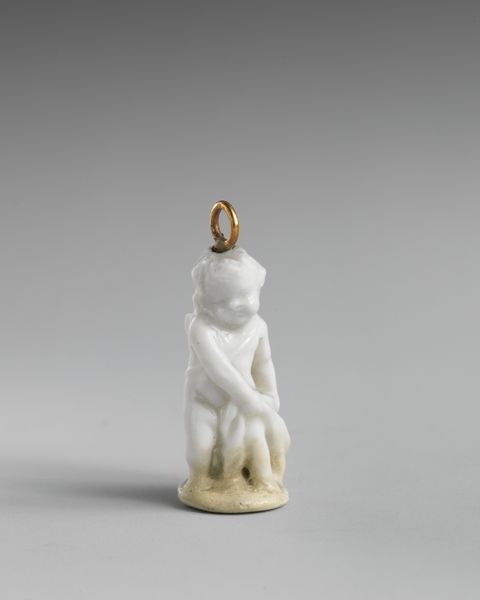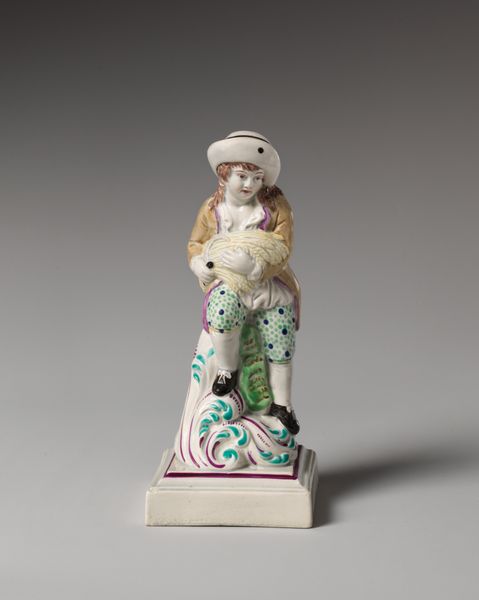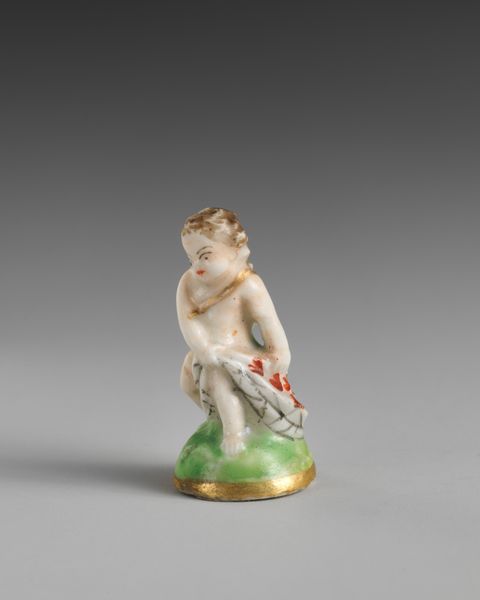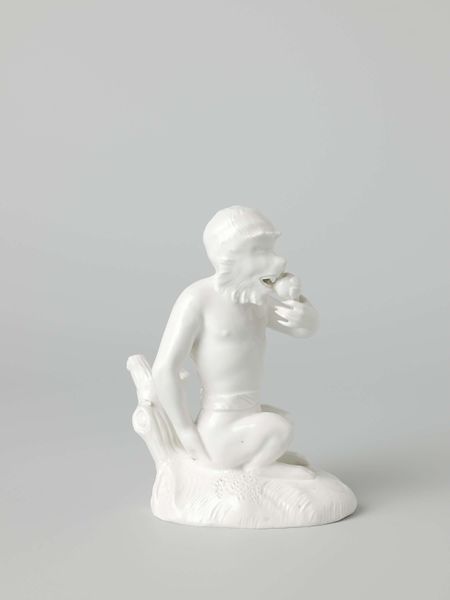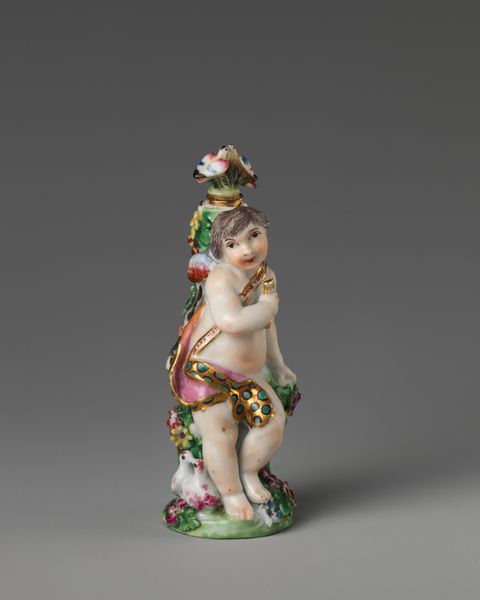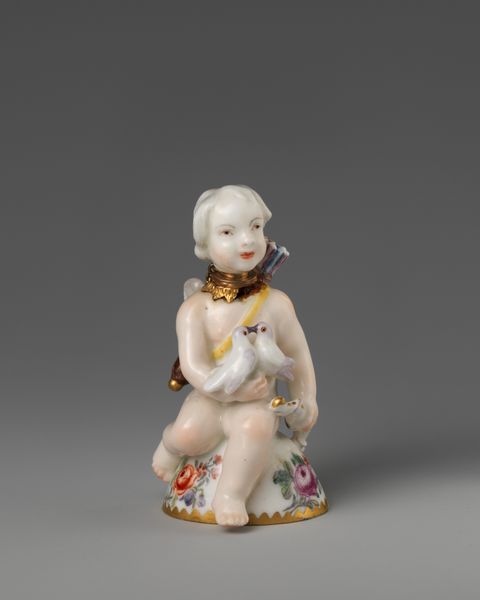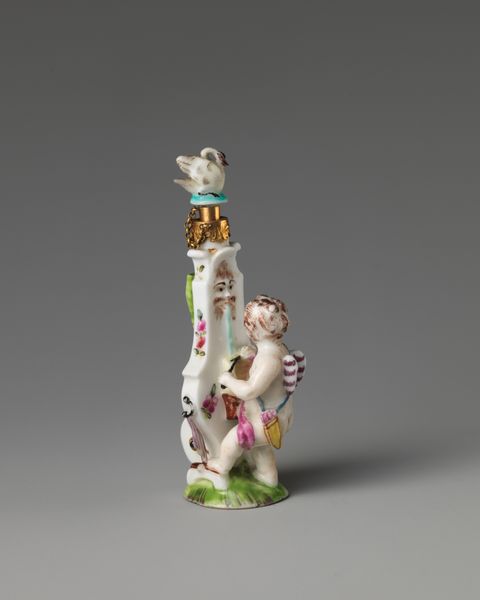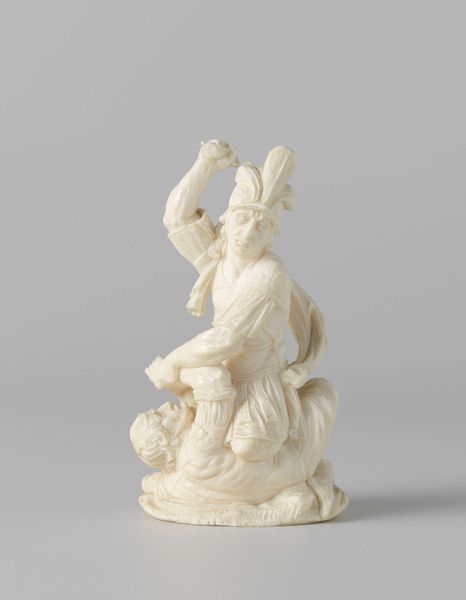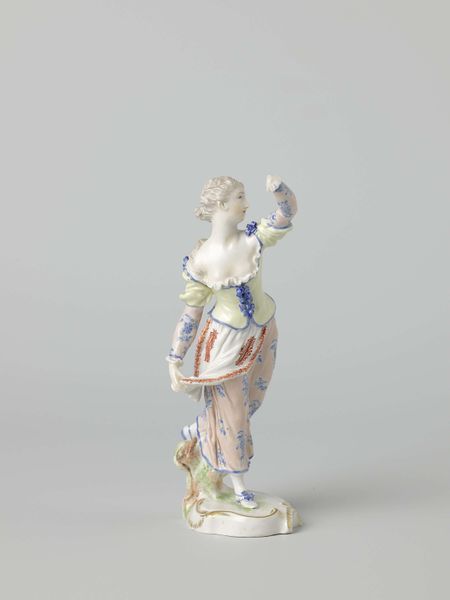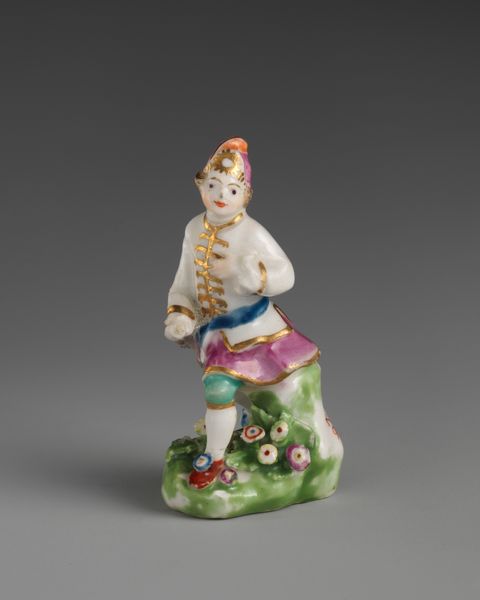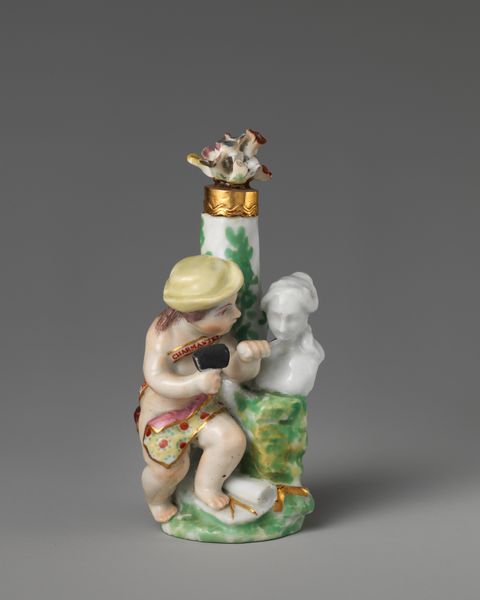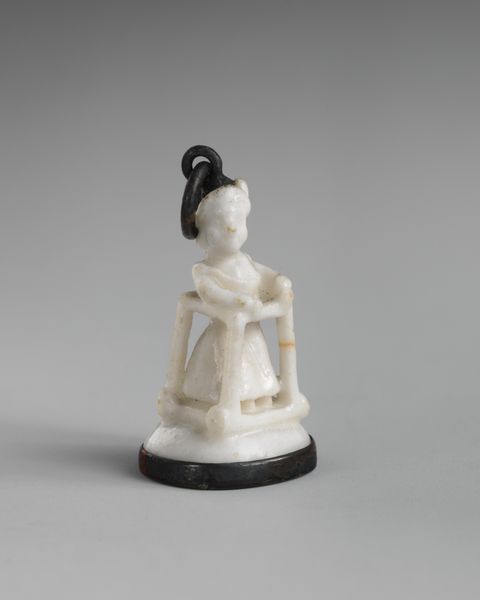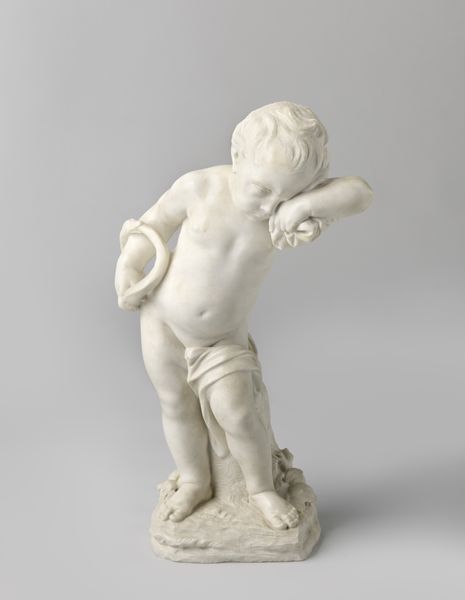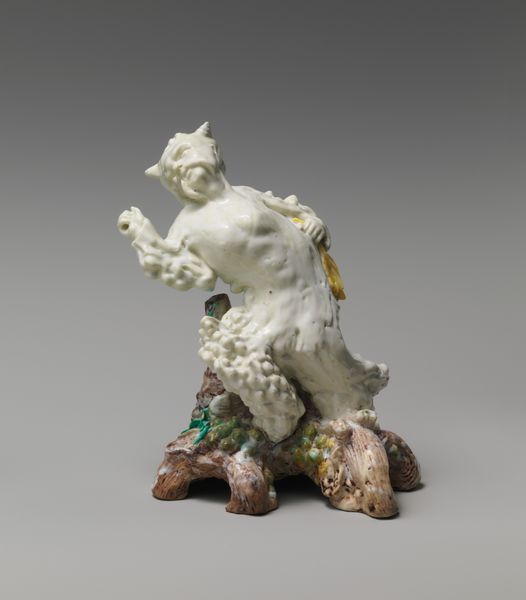
ceramic, porcelain, sculpture
#
ceramic
#
porcelain
#
figuration
#
sculpture
#
genre-painting
#
decorative-art
#
miniature
#
rococo
Dimensions: Height: 13/16 in. (2.1 cm)
Copyright: Public Domain
Curator: Here we have an 18th-century porcelain sculpture produced by the Chelsea Porcelain Manufactory entitled "Miniature Seal." You'll find it in the decorative arts section. Editor: It's so small and precious looking! There’s a sort of vulnerability that comes with its diminutive size. Is it meant to be a personal object? Curator: Most definitely. The seal, no bigger than your thumb, served a deeply personal purpose for its owner. Note the Cupid figure, the object it holds, and the text on the base. What feelings or messages do you interpret through those visual components? Editor: Cupid holding…is that supposed to be a heart aflame? I see the inscription now, too: "In Seul Me Suffit"—French, "In Myself Alone I Suffice.” It hints at something both tragic and empowering. The heart implies longing, but the motto suggests self-reliance, perhaps a response to failed love? Curator: Precisely! Seals like these became popular tokens reflecting complex emotions during the 18th century. These porcelain figures signified both personal identity and interior life during that period, rendered in a costly, carefully wrought object. Editor: I'm thinking about what it meant to own something so delicate. Who had access to these refined objects? How were they used day-to-day? I bet there are also larger narratives about porcelain as a luxury material during that era, its connection to colonial trade networks, and so forth. Curator: Indeed. These objects remind us that the era was driven by consumer desire and international material exchanges. Porcelain was a luxury item that nobles were eager to obtain for display. So, this tiny Cupid ends up encapsulating vast historical narratives through its creation and employment as a symbolic item. Editor: Seeing all of that concentrated in this small thing, a seemingly simple Cupid…it reveals how much weight objects like this can carry. I am really curious now to learn more about who may have held and impressed it into wax centuries ago. Curator: That sense of connection through time is why objects like these are preserved! Thanks for your insights on that note.
Comments
No comments
Be the first to comment and join the conversation on the ultimate creative platform.
